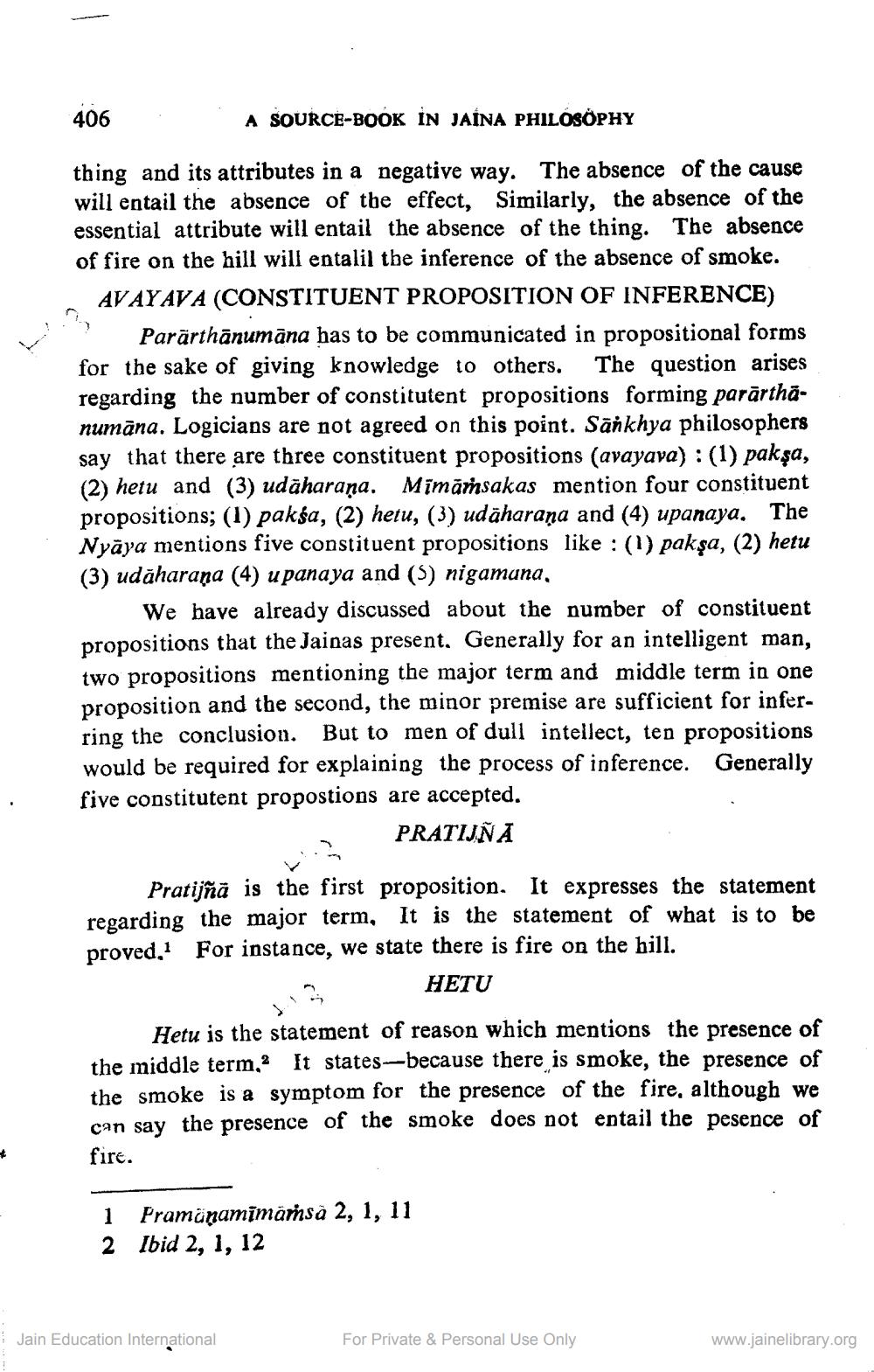________________
406
.:
A SOURCE-BOOK IN JAÍNA PHILOSOPHY
thing and its attributes in a negative way. The absence of the cause will entail the absence of the effect, Similarly, the absence of the essential attribute will entail the absence of the thing. The absence of fire on the hill will entalil the inference of the absence of smoke.
AVAYAVA (CONSTITUENT PROPOSITION OF INFERENCE) ? Parärthānumāna has to be communicated in propositional forms for the sake of giving knowledge to others. The question arises regarding the number of constitutent propositions forming parārthanumāna. Logicians are not agreed on this point. Sänkhya philosophers say that there are three constituent propositions (avayava) : (1) pakşa, (2) hetu and (3) udāharana. Mimárnsakas mention four constituent propositions; (1) paksa, (2) hetu, (3) udāharana and (4) upanaya. The Nyāya mentions five constituent propositions like : (1) pakşa, (2) hetu (3) udáharana (4) u panaya and (5) nigamuna,
We have already discussed about the number of constituent propositions that the Jainas present, Generally for an intelligent man, two propositions mentioning the major term and middle term in one proposition and the second, the minor premise are sufficient for inferring the conclusion. But to men of dull intellect, ten propositions would be required for explaining the process of inference. Generally five constitutent propostions are accepted.
PRATIJÑA
Pratijñā is the first proposition. It expresses the statement regarding the major term, It is the statement of what is to be proved,1 For instance, we state there is fire on the bill.
HETU
Hetu is the statement of reason which mentions the presence of the middle term, It states--because there is smoke, the presence of the smoke is a symptom for the presence of the fire, although we can say the presence of the smoke does not entail the pesence of fire.
1 2
Pramünamīmāṁsā 2, 1, 11 Ibid 2, 1, 12
Jain Education International
For Private & Personal Use Only
www.jainelibrary.org




